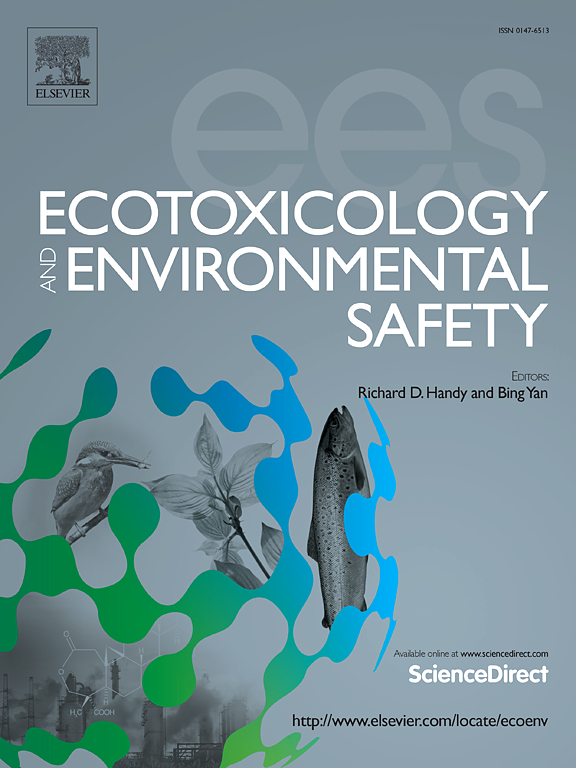Study on the role of miR-10b–3p as SASP in exosomes of premature senescent hepatocytes induced by hexavalent chromium
IF 6.2
2区 环境科学与生态学
Q1 ENVIRONMENTAL SCIENCES
引用次数: 0
Abstract
The exact mechanisms through which chronic, low-concentration exposure to Cr(VI) facilitates the development of related pathological conditions remain to be fully elucidated. Senescence-associated secretory phenotype (SASP) exhibits a bidirectional regulatory function in biological processes. Consequently, it is essential to identify the formulation and functional characteristics of the SASP released by Cr(VI)-triggered senescent L02 hepatocytes (S-L02). In this study, exosomes were extracted from the conditioned media of both normal L02 cells and their senescent counterparts (Senescent L02, S-L02 cells). Among the miRNAs identified in the exosomes, miR-10b-3p was found to be the most abundantly expressed in the exosomes derived from S-L02 cells. As part of the SASP, miR-10b-3p was shown to suppress the proliferation of both L02 and S-L02 cells. Simultaneously, it promoted the growth, migration, and invasive capabilities of hepatocellular carcinoma (HCC) cells. The next mechanistic analysis showed that miR-10b-3p reduces the regulatory influence of the protein PHLPP2 on Akt by downregulating its target gene, PHLPP2. This suppression led to lower levels of p27, FOXO3a and p21, thereby enhancing the proliferation of HCC cells by relieving the negative regulatory mechanisms of the cell cycle. This research offers significant understanding into the oncogenic pathways induced by Cr(VI), and provides laboratory evidence for mechanistic studies targeting hepatic carcinoma associated with Cr(VI) exposure.
miR-10b-3p作为SASP在六价铬诱导的早衰肝细胞外泌体中的作用研究
慢性低浓度暴露于Cr(VI)促进相关病理条件发展的确切机制仍有待充分阐明。衰老相关分泌表型(senescence associated secretory phenotype, SASP)在生物学过程中具有双向调节功能。因此,有必要确定由Cr(VI)触发的衰老L02肝细胞(S-L02)释放的SASP的配方和功能特征。在本研究中,我们从正常L02细胞和衰老L02细胞(senescent L02, S-L02细胞)的条件培养基中提取外泌体。在外泌体中鉴定的mirna中,发现miR-10b-3p在源自S-L02细胞的外泌体中表达最丰富。作为SASP的一部分,miR-10b-3p被证明可以抑制L02和S-L02细胞的增殖。同时,它促进肝细胞癌(HCC)细胞的生长、迁移和侵袭能力。接下来的机制分析表明,miR-10b-3p通过下调其靶基因PHLPP2,降低了PHLPP2蛋白对Akt的调控作用。这种抑制导致p27、FOXO3a和p21水平降低,从而通过缓解细胞周期的负调控机制增强HCC细胞的增殖。本研究为进一步了解Cr(VI)诱导的致癌途径提供了重要依据,并为Cr(VI)暴露相关肝癌的机制研究提供了实验室证据。
本文章由计算机程序翻译,如有差异,请以英文原文为准。
求助全文
约1分钟内获得全文
求助全文
来源期刊
CiteScore
12.10
自引率
5.90%
发文量
1234
审稿时长
88 days
期刊介绍:
Ecotoxicology and Environmental Safety is a multi-disciplinary journal that focuses on understanding the exposure and effects of environmental contamination on organisms including human health. The scope of the journal covers three main themes. The topics within these themes, indicated below, include (but are not limited to) the following: Ecotoxicology、Environmental Chemistry、Environmental Safety etc.

 求助内容:
求助内容: 应助结果提醒方式:
应助结果提醒方式:


